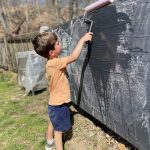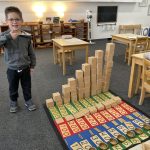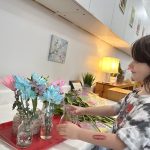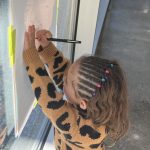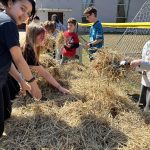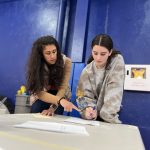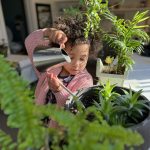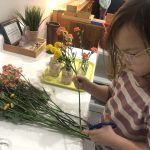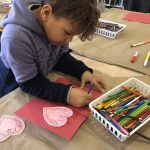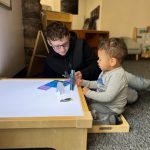Dear Fraser Woods Families,
There are many ways for families to establish an after school or evening routine, and those routines will look different depending upon the age of your child/children.
After picking up at dismissal, there may be rush-hour traffic, hungry kids, and homework – either assigned by your child’s teacher or suggested/required by you, which make weeknights stressful for any parent or caregiver. Families with multiple children will notice this time is trickier to manage because each child has their own learning style.
You can manage these chaotic periods with strategies that fit your family and make this time of day smoother.
- Snack
Studies show that nutrition affects children’s behavior and may reduce or increase attention and focus. Too much sugar and/or artificial coloring, may make it more difficult for children to focus.
Have a healthy snack ready for your child. You can pack a small cooler filled with nutritious food and water every afternoon, so that the kids have something to eat while you are driving home or to after-school activities. You can also have a snack ready when your child walks in the door (whole-grain crackers with natural sun or nut butter and an apple; a slice of cold turkey or ham and an orange; or a banana, etc.)
- Establish Your Own Routine- in other words, do what works for your family
Creating routines that work with your child/children is important in managing evening chaos. Some families may find that their child’s emotions are heightened after a long school day.
So experiment with your child’s schedule. Try doing homework at different times, or breaking it into small chunks. Another strategy is having someone (parent, older sibling, babysitter) sit with them, reading a book or working on another quiet activity; it provides reassurance.
Make the routine clear by creating a chart or poster with your child of the things that need to be accomplished that day: feed the dog, go to soccer practice, finish homework, read for 20 minutes, etc.
- Be Realistic
Some children can take a shower, brush their teeth, and get into pajamas in a half-hour, but others can’t.
Your expectations about what your child can do independently and which tasks need your support will help you with feeling frustrated.
Lauren Braswell, Ph.D., a clinical child psychologist, agrees that realistic expectations help the evening go smoother. “I see families struggle with what they can change and what they have to accept,” she says. If it takes your child longer to get through the evening chores or nightly homework, that’s just the way it is”.
- Physical Activity
For some children, it’s hard to tackle homework or chores immediately after school. One way to help your child focus is through exercise.
“Evidence shows that 20 or 30 minutes of exercise-taking a walk, playing in the backyard, doing some jumping jacks-can help a child focus for about 45 minutes to an hour afterward,” says John Ratey, M.D., an associate clinical professor of psychiatry at Harvard Medical School.
- Sleep
A good night’s sleep is so important, yet many children have difficulty with sleep routines for a variety of different reasons (restless, overtired, night time fears, etc.).
“Routines that may start with a warm bath, tooth-brushing, and some light stretching or calming breathing techniques, followed by reading a story, can help your child prepare their body and their mind for a good night’s rest.”
- Be Mindful of Your Words
When your priorities collide with your child’s, parents can feel overwhelmed. We want to avoid an edgy tone of voice or using harsh words.
Instead of saying, “You seem distracted,” try “Let’s work on finding a way to focus,” or “I know homework isn’t fun, but we need to get it done. So let’s get focused.”
Instead of saying, “You’re making a mess,” or “You’re getting a little sloppy,” try “Could you use a hand?” or “How can I help you clean this up?”
Instead of saying, “There are no monsters in your closet, just go to bed,” try “Lots of kids have scary dreams. How do you want to get rid of the monsters?” or “How about I stay in the room for a while until you fall asleep?”
When pressure is getting the best of you, focus on your ultimate parenting goal. Says Dr. Lauren Braswell, Ph.D., a clinical child psychologist, “Teach your child to be self-sufficient and preserve a loving parent/child relationship at all costs.”
Gina Tryforos
Assistant Head of School & Student Support Coordinator
